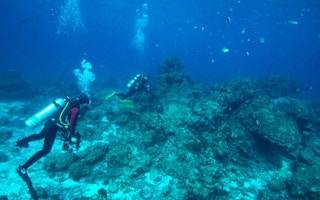Global warming is going to be very bad for the boreal forests of Siberia and Canada, calamitous for the coral reefs of the tropics and the cold deep waters – and lethal for the lizards of North America.
New research warns that the double assault of warmer and increasingly acidic oceans will affect coral reefs everywhere, growing conditions will move north faster than trees can migrate, and increasing extremes of heat will roast vulnerable reptile embryos to death.
As humankind pours more and more carbon dioxide into the planetary atmosphere as a consequence of fossil fuel combustion, these are among the impacts scientists say we should prepare for by 2100 and perhaps even earlier.
About one-third of the planet’s woodlands are strewn across Europe, Scandinavia, Russia, Alaska and Canada. These forests are a “sink” for atmospheric carbon, and at the same time they provide shelter for rich ecosystems and a source of income for tens of millions of people around the world.
Climate zone shifting
But the climate is changing. The region of the northern forests is warming at 0.5°C per decade, and by 2100 it could be on average between 6°C and 11°C higher that it is now. The climate zone is shifting at least 10 times faster than trees can migrate, according to a new study in Science journal.
“
This is now serious. I find it very unlikely that coral reefs as I knew them in the mid-1960s will still be found anywhere on this planet by mid-century.
Peter Sale, marine biologist at the University of Windsor, Canada
The likelihood is that the species to the south will be at greater risk of wildfire, drought, infection and insect assault, but the species at the northern fringe will not be able to colonise new ground to keep up. The loss of forest could accelerate global warming even further, although researchers cannot yet be sure.
“These forests evolved under cold conditions, and we do not know enough about the impacts of warming on their resilience and buffering capacity,” says one of the report’s co-authors, Anatoly Shvidenko, a senior researcher in the forestry programme at the International Institute for Applied Systems Analysis in Austria.
The consequences for the coral reefs of the world have been well reported, but geochemists at a global conference in Prague thought it worthwhile spelling out the dangers yet again.
Peter Sale, a marine biologist at the University of Windsor, Canada, used the hazard to the coral ecosystems to underscore the urgency of an international agreement at the UN’s forthcoming Paris conference on climate change to take steps to control emissions and limit average temperature increase to 2°C this century. But that may not be enough.
“Even if Paris is wildly successful, and a treaty is struck, ocean warming and ocean acidification are going to continue beyond the end of this century,” Sale says.
“This is now serious. I find it very unlikely that coral reefs as I knew them in the mid-1960s will still be found anywhere on this planet by mid-century. Instead, we will have algal-dominated, rubble-strewn, slowly eroding limestone benches.
“I see little hope for reefs unless we embark on a more aggressive emissions reduction plan.”
Lizards lay their eggs in the ground in spring and summer and leave them to gestate for up to two months. They are cold-blooded creatures that respond to the heat to become more active, and seek shade when it becomes too hot. − but infant lizards have no such freedom.
A team of scientists from Arizona State University (ASU) report in the Proceedings of the Royal Society B that, in experiments, they found that while adult animals might benefit from a warmer world, their embryos could be seriously at risk.
Pessimistic forecasts
They found that the lizard embryos die when subjected to temperatures greater than 43°C (110°F). Right now, only about 3 per cent of the US gets to this temperature in the shade. By 2100, under the more pessimistic climate forecasts, this could have grown to 48 per cent.
This could be bleak news for whole ecosystems, because lizards consume insects, and are in turn prey for snakes and birds and mammals.
“Lizards put all of their eggs in one basket, so a single heat wave can kill an entire group of eggs,” says Ofir Levy, postdoctoral fellow at the ASU School of Life Sciences, who led the study.
“If mothers don’t dig deeper nests to lay their eggs, we expect this species to decline throughout the United States.”










